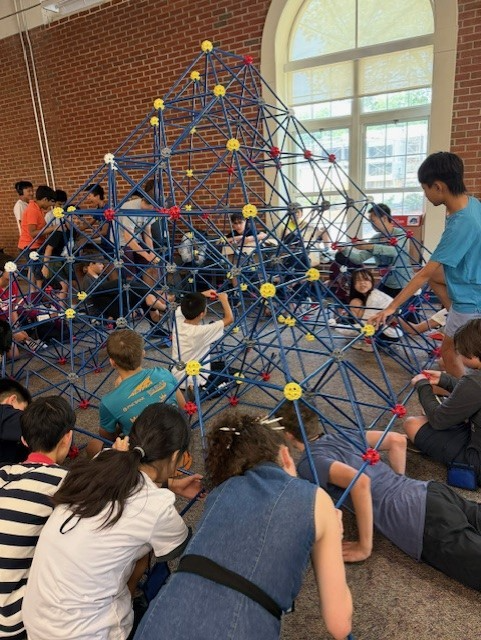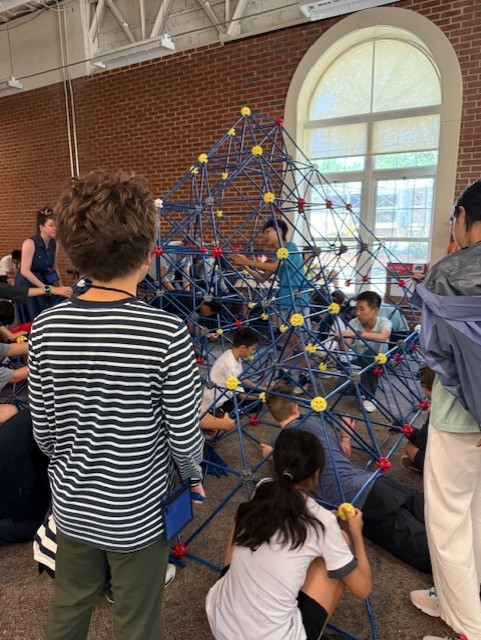Day 6 Hunting, Building, and Awards
July 25, 2025
It was a beautiful but very warm day on campus this morning, and our participants were ready for our annual scavenger hunt.
Our first event of the day was our third annual Scavenger Hunt that we called “Hunt of the Ivies.” Modeled after "The Amazing Race," this campus-wide challenge pushed our campers to apply not just mathematical insight, but also strategic teamwork and problem-solving under time pressure. Each team started at a different Ivy League-themed station and made their way across campus. At each station, teams had to solve a set of math problems in order to move forward; in some cases, they were sent on a "detour," where they had to solve an additional set of math problems to continue.
For the first time ever, six teams managed to complete all of the stations and even solved the Grand Ivy Final Challenge, a remarkable feat that only one team had ever accomplished before. We were forced to use a tie-breaker based on the number of correct answers each team had in their Ivy folder.
We invite you to try the final challenge question for yourself:
Imagine that all the numbers from 1 to 100 inclusive are written on a blackboard. At every stage, you are allowed to erase two numbers that appear on the board (let’s call the numbers you erased x and y) and in place of the two erased numbers, write the number x + y + xy. Repeat this operation until only a single number remains. What single number will remain?
Today was a double-header of sorts, as we enjoyed two consecutive activities featuring Glen Whitney. Glen has been a strong advocate for our program ever since we moved from Stanford University to The College of New Jersey. Glen is one of the founding fathers of The National Museum of Mathematics in New York City and is now one of the directors of the Seattle Universe Math Museum. Even though Glen is in California, he volunteered to coordinate a Zoom presentation with Nick Rauh in person (remember him from yesterday?) to help us. In the first time block, Glen introduced the students to The Game of Life, a “cellular automaton” that was invented by Cambridge mathematician John Conway. The game involves simulating the progress of a grid of cells. Based on a few mathematical rules, the cells can live, die or multiply. Exploring changes to the starting number and placement of cells, students could see the cells form various patterns throughout the course of the game.
After explaining The Game of Life, Glen gave our participants the choice of three different models to build based on The Game of Life,. We held a voice vote among choices A, B, and C, and choice A, a pyramid shaped structure, won. This afternoon students built a pipe-and-joint visualization of a 10-generation life cycle of one cell grid. Each layer of the construction represented a generation of cells, and by viewing the finished project from top to bottom one could see the way the cells would multiply, spread, and eventually disappear. It was quite a challenge, but the students handled it beautifully. The finished piece was very impressive!
Here are two photos showing our students working on the model.


Our Awards Ceremony was held in the Decker Social Space in the evening. Our students received books that were donated by The Art of Problem Solving (AoPS), medals, a booklet with the questions and solutions of all the tournament rounds, and certificates.
Best of luck to all our participants in their future mathematical studies. And I hope to see many of you back here next summer at our Fifteenth Annual Math League Summer Tournament—all participants from this summer are automatically eligible for next summer’s program.
点击这里查看 Day 6 照片(部分)
